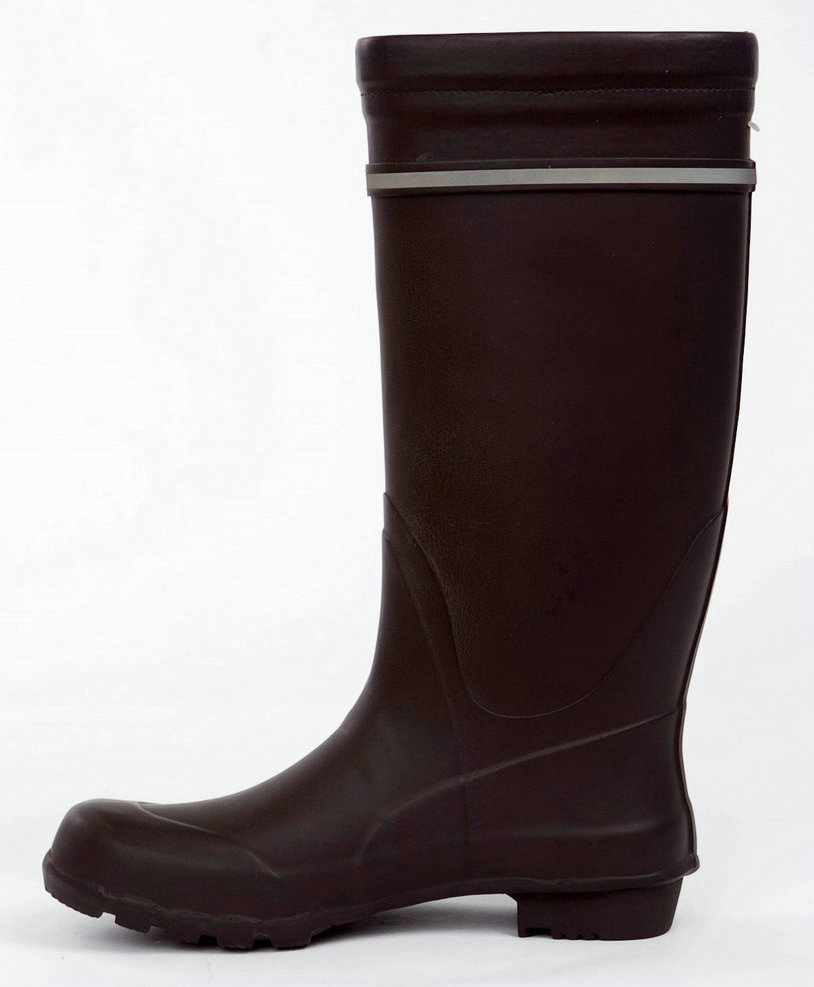Are Rubber Boots Waterproof?
Rubber boots, commonly known as rain boots or wellingtons, have long been a staple in many people’s wardrobes, particularly for those who live in areas with heavy rainfall or muddy conditions. The primary question that arises when considering rubber boots is whether they are truly waterproof. Let’s delve into the material, construction, and intended use of these versatile footwear options.
Material Matters
The main component of rubber boots is rubber, a waterproof material that is both flexible and durable. Natural rubber, synthetic rubber, or a combination of both can be used in the manufacturing process. Natural rubber is known for its elasticity and comfort, while synthetic rubber can offer a more consistent quality and is less prone to degradation. Regardless of the type used, the primary property of rubber is its ability to repel water, making it an ideal material for footwear designed for wet conditions.
Construction Techniques
The sealing techniques used in the construction of rubber boots significantly affect their waterproof capabilities. Many high-quality rubber boots feature seamless designs that minimize any potential entry points for water. Additionally, many brands employ advanced manufacturing methods such as heat bonding and vulcanization, which create a stronger bond between the rubber components and ensure that seams are watertight.
However, it is essential to note that not all rubber boots are created equal. Some cheaper options may have seams that are stitched rather than bonded, which can lead to leaks over time. Therefore, when purchasing rubber boots, it is crucial to consider the quality of construction and look for reputable brands known for their durability and waterproof features.
are rubber boots waterproof

Intended Use
While rubber boots are generally designed to be waterproof, their effectiveness can vary depending on the intended use. For casual wear in light rain or wet conditions, most rubber boots will perform exceptionally well. They are excellent for gardening, walking in the rain, or heading to the beach where water splashes are common.
On the other hand, if you plan to use them in harsher environments, such as deep mud or heavy snow, it is vital to choose boots specifically designed for those conditions. Insulated and reinforced rubber boots are available, providing both warmth and protection. These specialized boots not only enhance comfort but also ensure that your feet remain dry even in the most challenging weather.
Maintenance and Care
To maintain the waterproof qualities of rubber boots, proper care is essential. After each use, gently clean the boots to remove dirt and debris that can cause degradation over time. It is also advisable to allow them to dry naturally, avoiding direct heat sources, which can crack the rubber. Additionally, applying a rubber conditioner or protectant can help maintain the material’s integrity and prolong the life of the boots.
Conclusion
In summary, rubber boots are generally considered waterproof, primarily due to the intrinsic properties of rubber and the construction techniques used in their manufacturing. However, consumers should be discerning when choosing the right pair, considering factors such as materials, construction quality, and intended use. By doing so, you can ensure that your rubber boots will keep your feet dry and comfortable in a variety of wet conditions. With proper care and maintenance, a good pair of rubber boots can be an enduring addition to your footwear collection, providing reliable protection against the elements for years to come. Whether you're splashing in puddles or trudging through muddy fields, the right rubber boots can make all the difference in your outdoor experience.
-
Stay Dry in Any Condition with WadersNewsJul.17,2025
-
Elite Performance with Camouflage Combat BootsNewsJul.17,2025
-
Dry and Comfortable with Green Rubber Garden ShoesNewsJul.17,2025
-
Convenient Protection with Foldable RainbootsNewsJul.17,2025
-
Comfort and Protection with Neoprene Work BootsNewsJul.17,2025
-
Brighten Rainy Days with Floral Rain BootsNewsJul.17,2025
-
Safety Wellies: The Ultimate Combination of Protection, Comfort, and VisibilityNewsJun.19,2025











